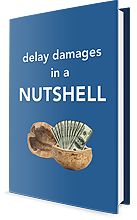Construction Delay Analysis – Principle No. 3 of 5
Delay Analysis Principle No. 3:
The critical path is the longest path.
Identifying the critical path is one of the very first things we look for when opening a CPM schedule for the first time. It is certainly the first significant step when performing a schedule delay analysis.
Oracle’s Project Management (P6) scheduling software package allows users to identify activities in the project schedule as critical activities by coloring them “red.” The user may identify the critical path either by total float values or by using the software’s longest path feature. The selection of one of these options merely instructs the scheduling software which activities should be colored red. For example, a user could select total float as the way to identify critical activities, and instruct the software that all activities with total float values of 25 workdays or less be identified as critical and colored red.
However, merely identifying activities with certain total float values as critical does not mean that they are automatically on the project’s critical path. Common features of modern CPM scheduling programs thwart the use of float as a reliable indicator of the critical path. As a result, the path of least float, zero float, or most negative float, may not be the critical path – though is used to be a reliable indicator.
In fact, Oracle’s Primavera Project Management (P6) states that projects using multiple calendars should rely on the “longest path” filter to identify the critical path, because “. . .using float to identify critical activities may prove misleading, since some activities have large float values due to their calendar assignments but are still critical to the completion of the project.”
Because activity total float values are unreliable as indicators, the critical path should be identified by identifying the longest path. As defined in an earlier posting, the critical path is “the longest path of work in the schedule network that forecasts when the project will finish.”
For more on this or any other topic, please call me at 215-814-6400 or email me at mark.nagata@traunerconsulting.com.

